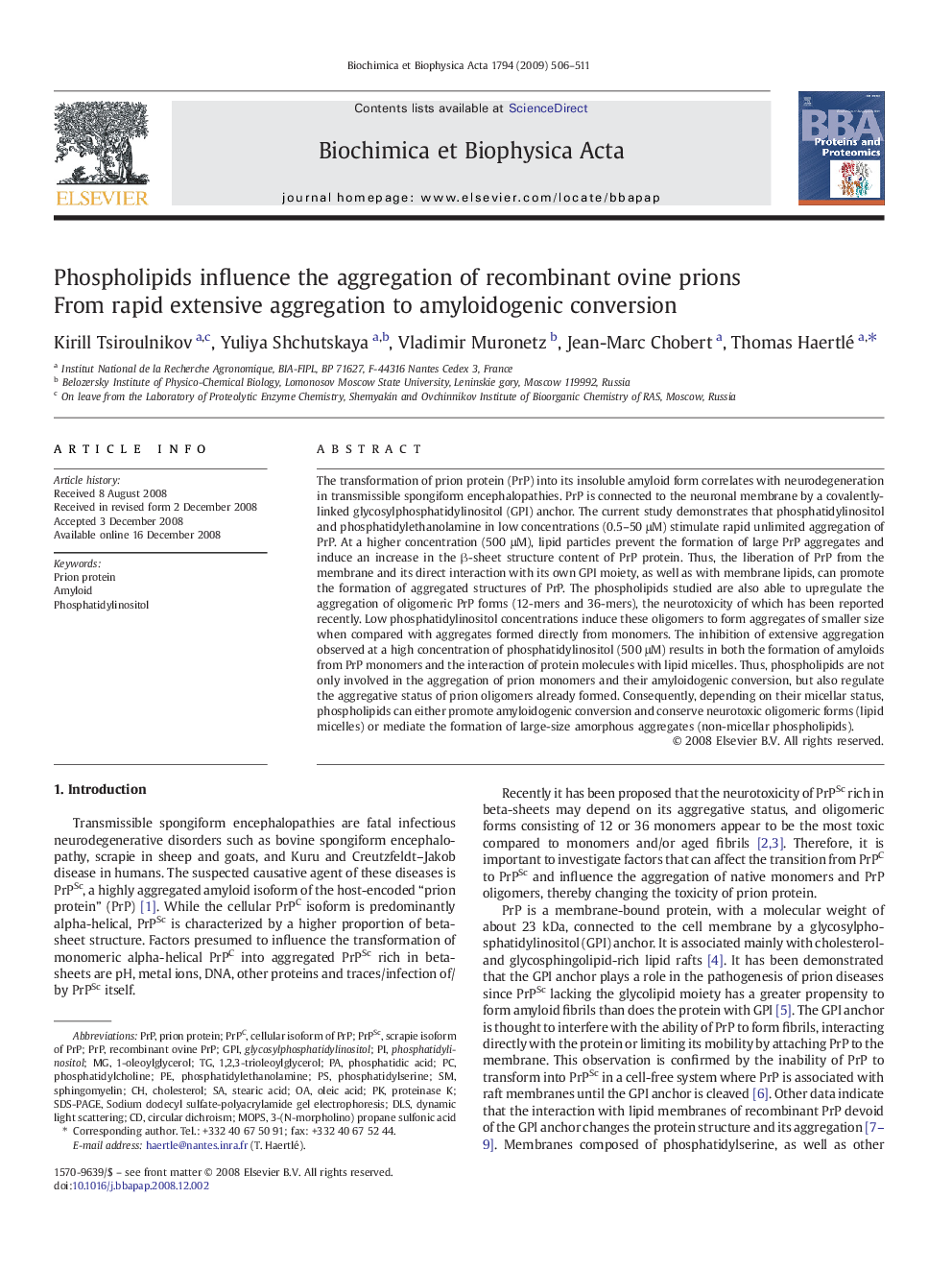| کد مقاله | کد نشریه | سال انتشار | مقاله انگلیسی | نسخه تمام متن |
|---|---|---|---|---|
| 1178968 | 962744 | 2009 | 6 صفحه PDF | دانلود رایگان |

The transformation of prion protein (PrP) into its insoluble amyloid form correlates with neurodegeneration in transmissible spongiform encephalopathies. PrP is connected to the neuronal membrane by a covalently-linked glycosylphosphatidylinositol (GPI) anchor. The current study demonstrates that phosphatidylinositol and phosphatidylethanolamine in low concentrations (0.5–50 μM) stimulate rapid unlimited aggregation of PrP. At a higher concentration (500 μM), lipid particles prevent the formation of large PrP aggregates and induce an increase in the β-sheet structure content of PrP protein. Thus, the liberation of PrP from the membrane and its direct interaction with its own GPI moiety, as well as with membrane lipids, can promote the formation of aggregated structures of PrP. The phospholipids studied are also able to upregulate the aggregation of oligomeric PrP forms (12-mers and 36-mers), the neurotoxicity of which has been reported recently. Low phosphatidylinositol concentrations induce these oligomers to form aggregates of smaller size when compared with aggregates formed directly from monomers. The inhibition of extensive aggregation observed at a high concentration of phosphatidylinositol (500 μM) results in both the formation of amyloids from PrP monomers and the interaction of protein molecules with lipid micelles. Thus, phospholipids are not only involved in the aggregation of prion monomers and their amyloidogenic conversion, but also regulate the aggregative status of prion oligomers already formed. Consequently, depending on their micellar status, phospholipids can either promote amyloidogenic conversion and conserve neurotoxic oligomeric forms (lipid micelles) or mediate the formation of large-size amorphous aggregates (non-micellar phospholipids).
Journal: Biochimica et Biophysica Acta (BBA) - Proteins and Proteomics - Volume 1794, Issue 3, March 2009, Pages 506–511